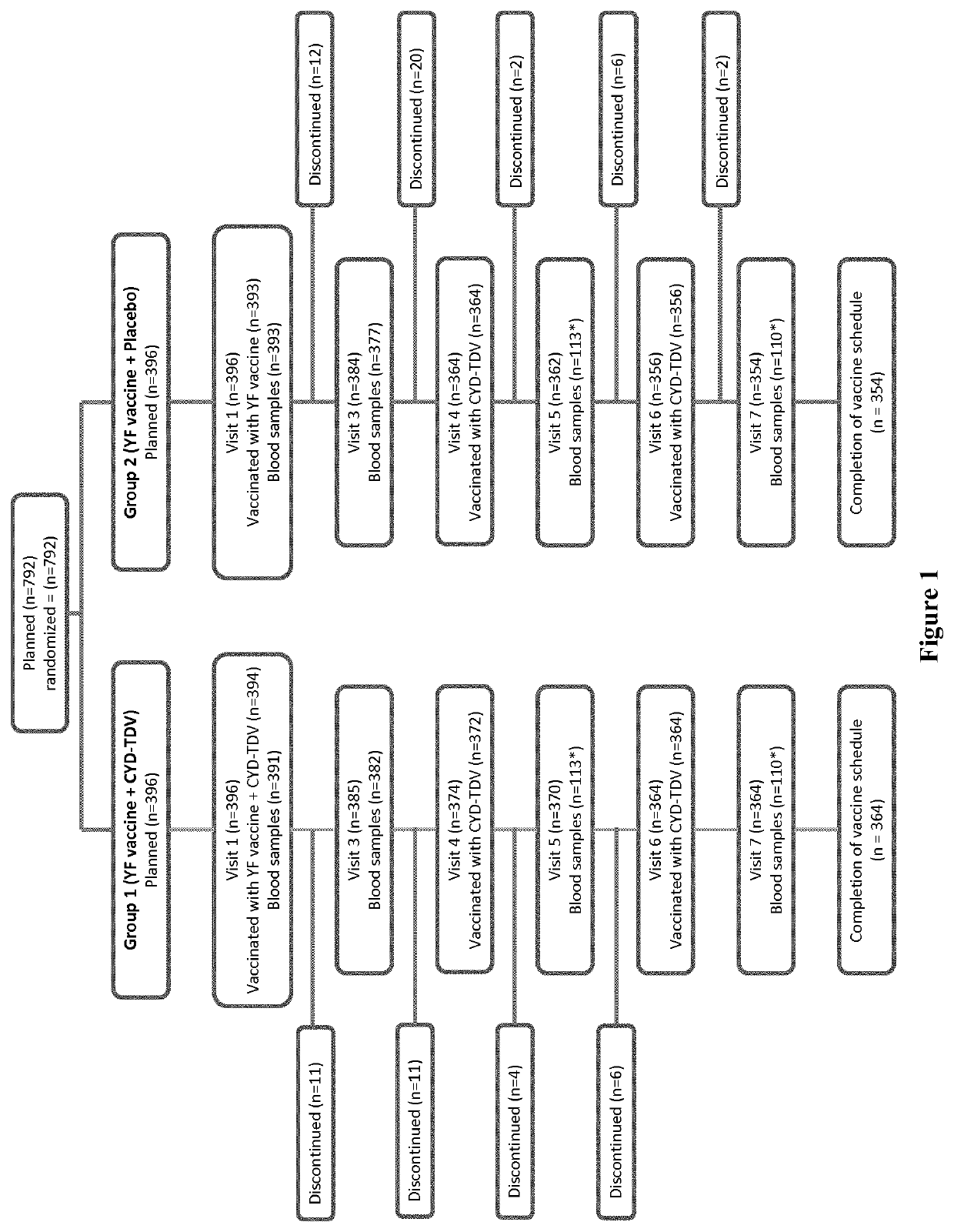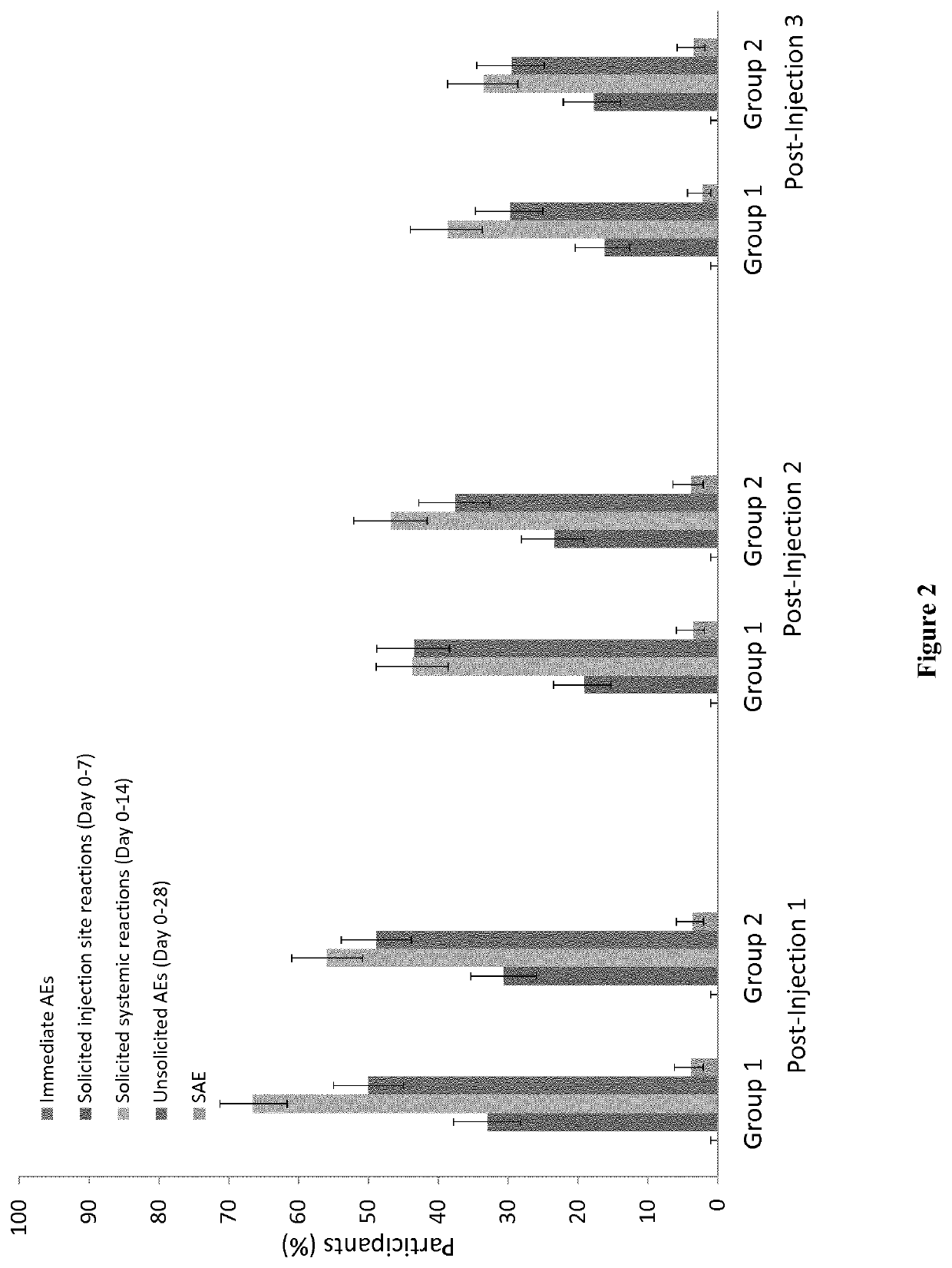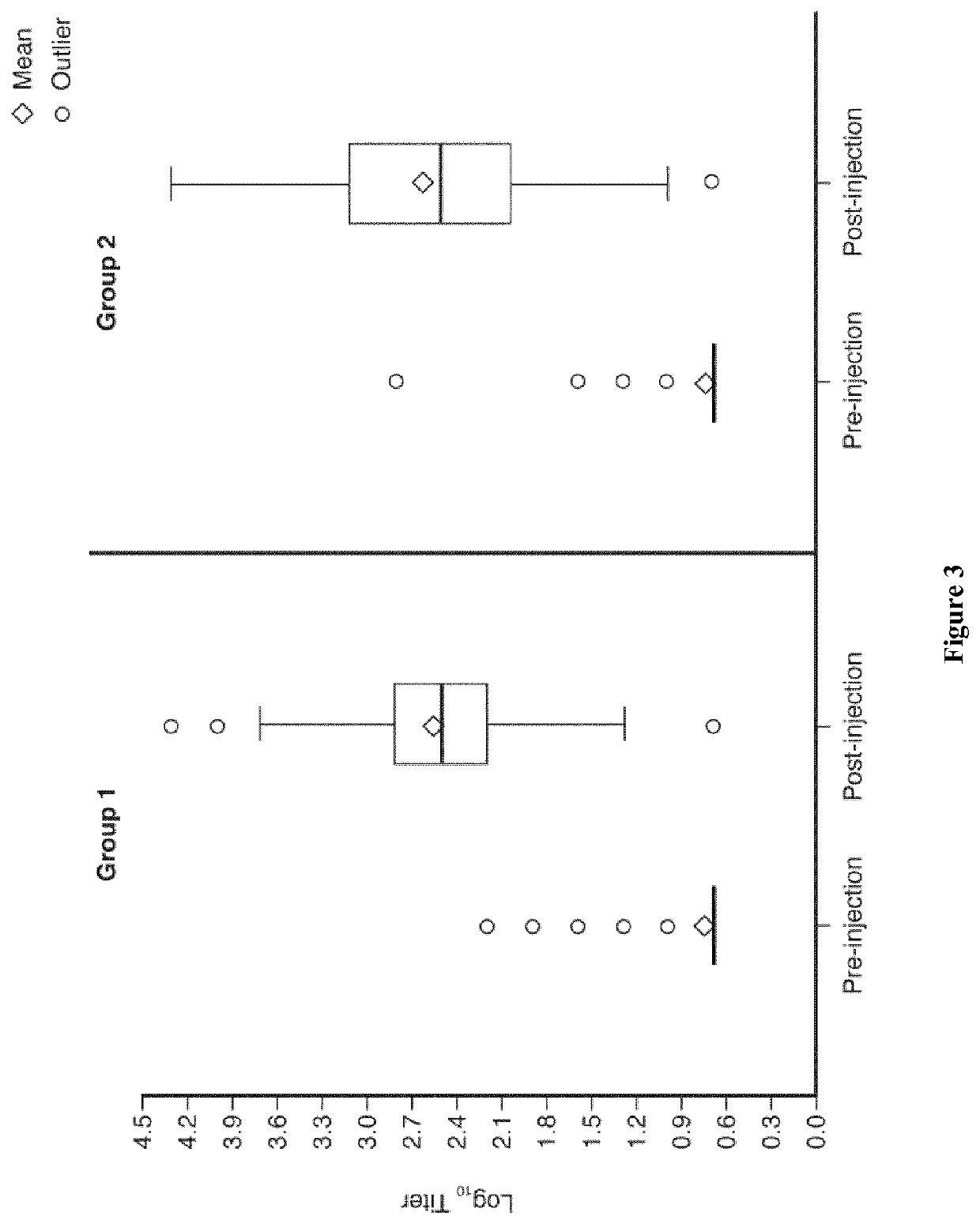Concomitant dengue and yellow fever vaccination
a dengue and yellow fever vaccine technology, applied in the field of multivalent vaccines, can solve the problems of increasing complexity and crowded schedule of vaccinations, affecting the compliance of vaccines, and 25,000 deaths
- Summary
- Abstract
- Description
- Claims
- Application Information
AI Technical Summary
Problems solved by technology
Method used
Image
Examples
example 1
Yellow Fever (YF) and Dengue Vaccination with a Three Injection Administration Schedule at M0, After 6 Months (M6) and After 12 Months (M12) in Toddlers
[0144]A. Materials and Methods
[0145]A.1. Study Design and Participants
[0146]This was a randomized, observer-blind, controlled, multi-center, phase III trial conducted in 792 toddlers in Colombia and Peru between 7 Sep. 2011 and 2 Sep. 2013. The study was conducted in accordance with the ethical principles of the Declaration of Helsinki and the International Conference on the Harmonization-Good Clinical Practice. The study was approved by each study site's institutional review board and local ethics committee, and written informed consent was obtained from all participants' parents / guardians before study entry.
[0147]Eligible participants were toddlers aged 12 months (or up to the first day of the 13th month after birth) in good health and who were born at full term (≥37 weeks pregnancy) with a birth weight ≥2.5 kg. The toddlers had to...
example 1-1
Safety of the Combined Yellow Fever and Dengue Vaccination
[0166]There were no immediate unsolicited adverse events or reactions. A summary of the safety overview is presented in FIG. 2. There were no safety concerns following concomitant administration of YF vaccine with CYD-TDV during the study period, however, fever was more frequent following concomitant administration of YF vaccine with CYD-TDV compared with YF vaccine and placebo (26.7% versus 16.5%; p<0.001). Most solicited reactions were of grade 1 intensity occurring within 3 days after any injection. Details of injection site and systemic reactions are summarized in Table 2.
[0167]A total of eight participants experienced adverse events that led to study discontinuation: three in Group 1 and five in Group 2. Overall, 73 participants experienced 83 serious adverse events at any time during the study with no differences between study groups: 35 (8.9%) in Group 1 and 38 (9.7%) in Group 2 reported 41 and 42 serious adverse event...
example 1-2
Immune Response to the Combined Yellow Fever and Dengue Vaccination
[0169]Yellow Fever Vaccine Immune Response
[0170]YF seroconversion rates 28 days after the first study injections in the per-protocol analysis are summarized (Table 3)—administration of the YF vaccine concomitantly with CYD-TDV was non-inferior to the immune response following concomitant administration of YF and placebo in FV seronegative toddlers. The difference in seroconversion rates (PRNT50≥1:10) between the two groups was 0.33% (95% CI—0.98; 1.87). A similar result was also observed in the intent-to-treat cohort (Table 3).
[0171]Log10 YF antibody titers before and 28 days after the first study injections are illustrated in box plots for both groups in the intent-to-treat set (FIG. 3).
[0172]CYD-TDV Immune Response
[0173]The proportion of dengue immune subjects at baseline was low and similar in both groups, with 23 subjects (6.0%) in Group 1 and 22 subjects (5.8%) in Group 2. GMTs of the antibodies against the four...
PUM
| Property | Measurement | Unit |
|---|---|---|
| time | aaaaa | aaaaa |
| time | aaaaa | aaaaa |
| volume | aaaaa | aaaaa |
Abstract
Description
Claims
Application Information
 Login to View More
Login to View More - R&D
- Intellectual Property
- Life Sciences
- Materials
- Tech Scout
- Unparalleled Data Quality
- Higher Quality Content
- 60% Fewer Hallucinations
Browse by: Latest US Patents, China's latest patents, Technical Efficacy Thesaurus, Application Domain, Technology Topic, Popular Technical Reports.
© 2025 PatSnap. All rights reserved.Legal|Privacy policy|Modern Slavery Act Transparency Statement|Sitemap|About US| Contact US: help@patsnap.com



